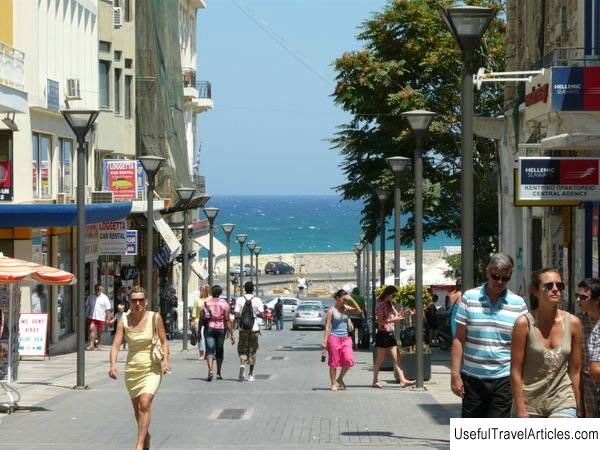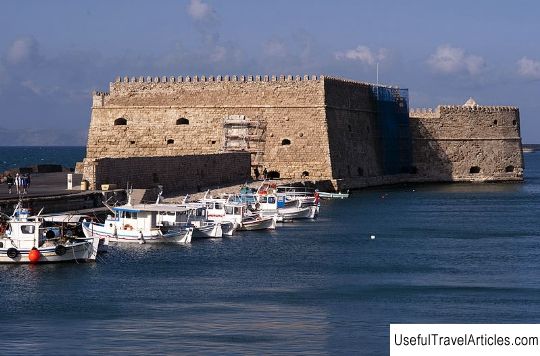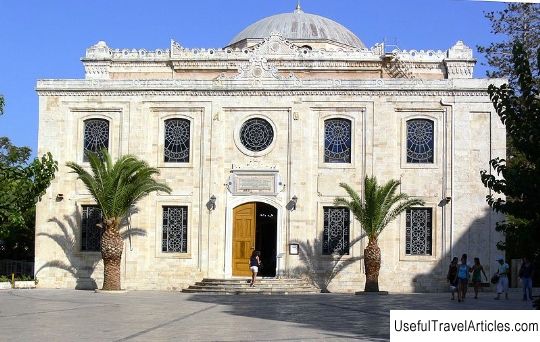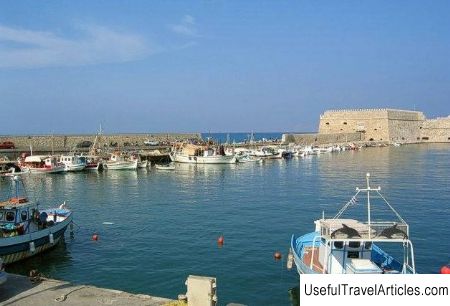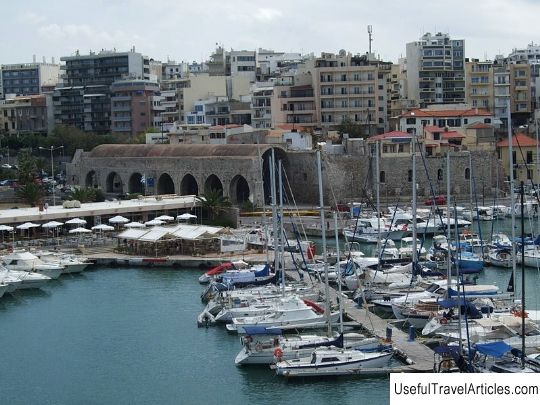Heraklion. Recreation and entertainment
Rating: 8,4/10 (3160 votes)  HistoryThe city was founded in 824 by the Arab Saracens on the site of the ancient Minoan harbor. During the rule of the Saracens, the city was flooded with pirates, who brought here loot. In 961, the city was conquered by the Byzantines, who completely burned it down, and all the wealth was transported to Constantinople. In 1210 the city passed to Venice, Heraklion became a cultural center during this period. In the XV-XVII centuries Heraklion flourished, associated with the development of education, church culture and painting schools. In the same period, the city was surrounded by fortress walls that have survived to this day. The wall was 4.5 kilometers long, and in some places it reached sixty meters wide. In 1645, the Turks started a war for the city, which lasted for 24 years. In 1669, the city's military leader handed the city over to the Turks, having agreed on the peaceful evacuation of the townspeople. In 1898 the island of Crete gained independence, and after the Balkan War of 1912-1913. united with Greece. In May 1941, the inhabitants of Heraklion and nearby cities became famous for their participation in the Battle of Crete and in the Greek Resistance of 1941-1944. In 1971, Heraklion becomes the administrative center of Crete. TourismHeraklion, at first glance, is an unremarkable city – the streets are narrow and crowded with cars. However, if you get to know it a little closer, you can find the quiet streets of the old city, where there are more locals than tourists, traditional coffee shops and other cozy establishments. In addition, in and around Heraklion are the most important sights of the island. The cultural heritage of this area is very great. Most of the tourist routes in Crete and Heraklion in particular are based on visiting archaeological sites. Tourists can visit unique archaeological sites such as the Minotaur labyrinth in the Palace of Knossos or the excavation sites of Minoan cities. Besides the sights, Heraklion is attracted by the stunning nature, which is conducive to relaxation. Picturesque mountain slopes rise above the sea, lush gardens, vineyards, olive groves grow on the outskirts of the city. Closer to the sea there are many pebbly and sandy beaches, very comfortable and equipped especially for relaxation. For example, 26 kilometers from Heraklion, on the western coast of Malia Bay, there is a very popular resort of Hersonissos, famous for its beaches, a huge variety of shops, bars, cafes, restaurants, nightclubs. Picturesque nature, rich history and excellent conditions for recreation have made Heraklion a popular tourist destination. AttractionsNikos Kazantzakis Museum – a museum dedicated to the writer N. Kazantzakis, opened in 1983. The museum displays letters, diaries, personal items, souvenirs from the writer's travels, rare photographs, audio and video materials. Palace of Knossos – an antique Minoan palace, the ruins of which are located five kilometers from Heraklion, among the vineyards of Kefala. This palace gave birth to myths about the wise king Minos, the Minotaur, the thread of Ariadne and the hero Theseus. The complex building is a maze of corridors and rooms with amazing stucco moldings and paintings. The most amazing objects in the palace – bathroom and toilet, built over 3500 thousand years ago, the most ancient royal road in Europe and the throne of the reaper king. Mount Ida – Crete's highest mountain (2,456 meters), on top of which there are many sanctuaries, including the Ideo Cave. A 230 km asphalt road leads to the mountain, winding through the rocks. Occasionally there are shepherd's houses along the road. There is a small ski resort nearby. Ideo Cave – a cave on top of Mount Ida, in which, according to legend, Zeus grew up. Many finds were made in it, for example, bronze shields created in the 7th century BC. e. Many of the archaeological finds are exhibited today at the Archaeological Museum of Heraklion. Kamares Cave – a cave on the southern slope of Mount Ida. The ascent to it from the village of Kamares takes three hours. The famous Minoan vessels were discovered here, some of which are on display in the Archaeological Museum of Heraklion today. Toplou Monastery – one of the richest and most influential monasteries in Crete, founded in the XIV century. The complex of monastery buildings includes cells, a small church, a monastery museum with a collection of icons and engravings of the 15th-18th centuries. Lake Kurna – the only lake in Crete. The reservoir is surrounded by mountains, and its water is very clean and quiet. Turtles live at the bottom of the lake, and there are several cafes and taverns on its shore. Argyroupoli – village near Heraklion. It is located on a hill next to the springs. In the rich greenery surrounding the hill, lower on the slopes, these springs form waterfalls. Archaeological Museum of Heraklion – museum, which contains unique valuable items, witnesses of Minoan culture, works of art from the Mycenaean era, the Hellenistic period. Only the Athens Museum surpasses the Heraklion Museum in the richness of its collection. The famous Knossos frescoes, the Festa disc, skillfully carved stone vessels, jewelry, Minoan axes and other items are kept here. Preveli Monastery – a functioning monastery, the road to which leads through the Courtagliotiko gorge. The monastery stands in a beautiful secluded place with a picturesque view of the sea. The small museum at the monastery contains a collection of church utensils, which includes richly embroidered vestments, silver candlesticks and other items. The beach of the same name is located a kilometer from the monastery. Cathedral of Saint Titus – the cathedral in Heraklion, consecrated in honor of the Apostle Titus, who preached Christianity in Crete in the 1st century. Cathedral of Saint Mina – one of the largest cathedrals in Greece, located in Venizelow Square. The cathedral began with a small church built in 1735. Later, the church was rebuilt and acquired signs of the Greco-Byzantine style and with traditional Byzantine frescoes. Aquarium of Crete – aquarium in the resort of Hersonissos, opened in 2005. In the aquarium there are about 60 display containers, in which representatives of the Mediterranean marine fauna, more than 250 species, live. Historical Museum of Crete – a museum dedicated to the history of the island is located in Heraklion. The museum, founded in 1953, acquaints visitors with the history of the island from early Christian times to modern times. Valuable archaeological, ethnographic and historical materials are kept here. The museum is housed in a two-story neoclassical mansion. Morosini Fountain – a unique fountain created in 1628 by Francesco Morosini with the help of several engineers. The fountain is a significant artistic and technical achievement of its time. The water used in the fountain flows down a special water supply system from the slopes of Yukhta. We also recommend reading Linz. Recreation and entertainment Topic: Heraklion. Recreation and entertainment. |
